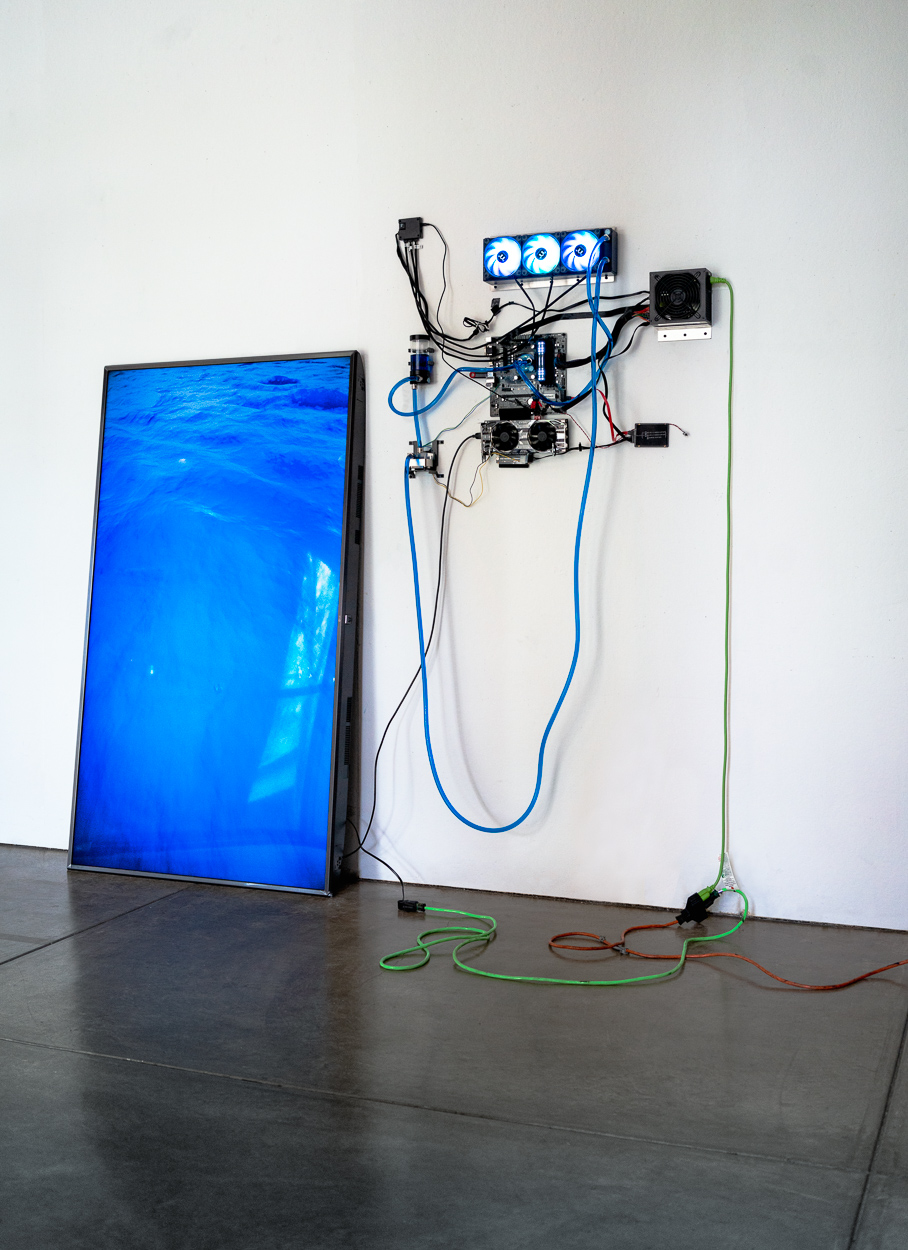“Normally, as an artist, you would keep an archive of references for your own practice. I am trying to translate that into my collection”
FAR (@0xfar) is an artist, educator and NFT collector with a unique background in engineering and design. He holds an MA in civil engineering, as well as architecture and art, on top of a PhD in visual studies from Harvard University.
“As an engineering and design student, I was really interested in computer graphics and the construction of virtual spaces: how the built environment translated from virtual to real, and vice versa,” he explains. For several years, the artist and academic also worked as a stadium designer: “I spent a lot of time creating experiences and environments. That was a very formative period for my artistic career, which I translated into virtual spaces.”
Now, FAR’s practice spans art, design, and engineering, and his research focuses on the intersection of technology and humanities. In 2014, he became involved in cryptocurrencies, and in 2017 he purchased his first NFT: a Rare Pepe.
Four years later, his collection spans digital art, moving image and, more recently, photography. FAR has collected work by Gregory Eddi Jones, Daniel Gordon, Alejandro Cartagena, Roberto Salazar, Fernando Gallegos, Matt Doogue, Grace Hoyle and Amy Elkins. The artist is both a creator – of Infinites AI and Infinites IRL – and collector in the NFT space, and sees this as a way of supporting artists, and investing back into the community.
Here, we speak to FAR about his journey into blockchains, his approach to collecting work, and the future of photography in the NFT space.
When and how did you first become interested in NFTs?
Around 2014, I learned about crypto and started to be involved in different communities. Particularly, I was amazed by Dogecoin, a project that I always considered a brilliant conceptual work. At the same time, I was paying attention to artists working with the blockchain as a medium and concept. Early on, I was experimenting with collectibles using Counterparty [a peer-to-peer financial platform built on the Bitcoin blockchain]. It wasn’t later until 2018/2019 when I minted my first NFTs using Ethereum.
How do you decide what works to buy? Do you have a strategy for collecting?
Right now I am focusing on collecting NFTs made by artists I like. I look at art all day. I try to find work that speaks to me, conceptually and formally. Normally, as an artist, you would keep an archive of references for your own practice. I am trying to translate that into my collection, if the value of the artwork is within my budget.
What was the most recent NFT you bought, and why did you purchase it?
Mountain XVII – Sawtooth by Adam Ferris is one of my latest acquisitions. Adam is one of the most interesting artists working with code and I have been following his work closely. You can find his work on Tezos or Foundation, and it’s fantastic.
“I’m particularly interested in artists that utilise the blockchain more as a medium, rather than a platform. I want to see more interaction with the blockchain at a conceptual and material level”
Who are your favorite artists in the NFT space right now? Is there anyone whose work you’d love to own?
I have so many works from artists on my wishlist that it would be unfair to name one. However, lately I’m particularly interested in artists that utilise the blockchain more as a medium, rather than a platform. I want to see more interaction with the blockchain at a conceptual and material level.
Can you make any predictions about the future of photography in the NFT space?
I want to see how photography evolves, since it is one of the mediums that is almost forced to utilise a “pointer” NFT. Meaning, the artwork is not on-chain, but just a link to where the image is stored. I am interested to see more photography projects that play with the blockchain in creative ways, like SALT.
You have been involved with blockchains since 2014. This space has changed immensely in the last seven years. Is this just the beginning?
The space has evolved since 2014 – I can say that it is very mature now. I want to believe that crypto changed the life of everyone that adopted the technology, and was not just a vehicle for speculation: it created a very solid ecosystem, despite temporary speculators that come and go every cycle.
NFTs attracted a completely new type of adoption from creative people: that is to say, they were looking at the technology as a medium to improve their lives. This is very important, and is one of the reasons why I buy NFTs from artists with solid careers that are looking at crypto as a space to create community.
Clearly, adoption is real. We went from seeing crypto in mainstream media as a tool for criminals to a useful technology and a cultural movement. So, I believe the future is bright, especially for people that are joining to build, be part of the community, and utilise the technology, as opposed to passive speculation.



